| |
The ancient Telmessos |
|


|
| |
|
| |
Fethiye |
|
| |
|
| |
|
| |
The sun god Apollo himself is said to have founded this city |
|
| |
|
Our video on the
topic of this page |
| |
|
|
|
| |
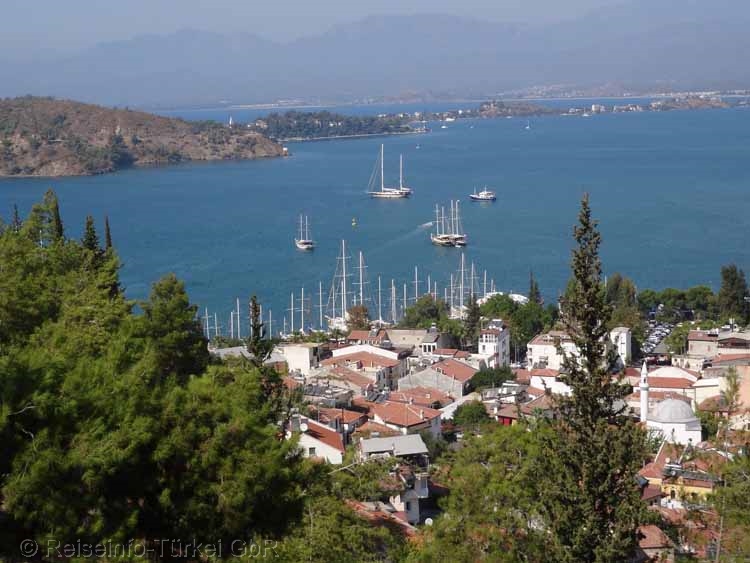 |
|
|
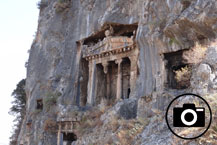 |
|
Fethiye |
|
The port of Fethiye is the starting point of the Blue Voyages into the Gulf of Fethye with its twelve beautiful islands. The Dalyan delta with the ancient city of Kaunos are also the destination of these trips, as well as the nearby dream beach Ölüdeniz and the island of Gemiler. |
|
| |
|
| |
|
| |
|
| |
|
| |
|
| |
|
| |
|
| |
|
| |
|
| |
|
| |
|
| |
|
| |
|
| |
|
| |
|
| |
|
| |
|
| |
|
| |
|
| |
|
| |
|
| |
|
| |
|
| |
|
|
| |
According to a legend the sun god Apollo himself is said to have founded the city of Telmessos, today Fethiye. According to legend, Apollo fell in love with the youngest daughter of the Phoenician king Agenor. To approach his beloved, he took the form of a small, graceful puppy. They married and a son was born, whom they named Telmessos. Apollo gave the city he founded the name of his son. |
|
| |
|
| |
|
| |
|
| |
|
| |
|
|
| |
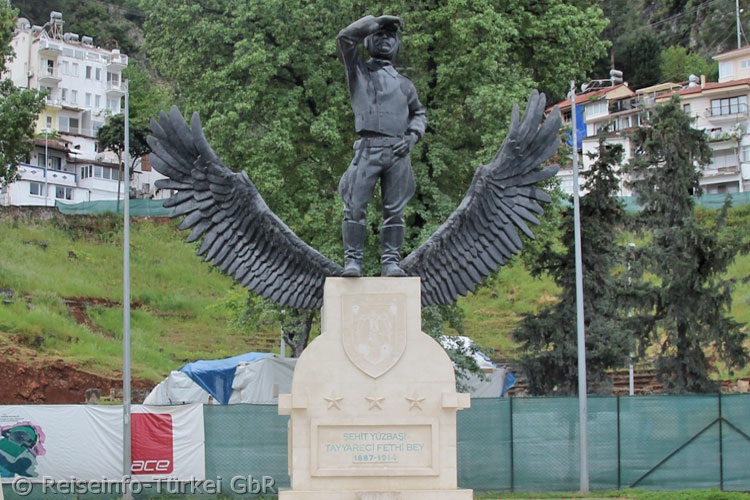 |
|
| |
|
| |
|
| |
|
| |
|
| |
|
| |
|
| |
|
| |
|
| |
|
| |
| |
|
| |
|
| |
|
| |
|
| |
|
| |
|
| |
|
| |
|
| |
|
| |
|
| |
|
| |
|
| |
|
|
| |
The name Telmessos was changed to "Anastasiapolis"
in the 8th century AD in honour of the Byzantine ruler Anastasios.
In 1424 the city became part of the Ottoman Empire and received the
name "Meğri".
The city received its present name "Fethiye" in memory of the pilot
Fethi Bey who died in 1934. In 1999, a 10-metre high statue was
erected in honour of him in front of the ancient theatre. |
|
| |
|
| |
|
| |
|
| |
|
| |
|
|
| |
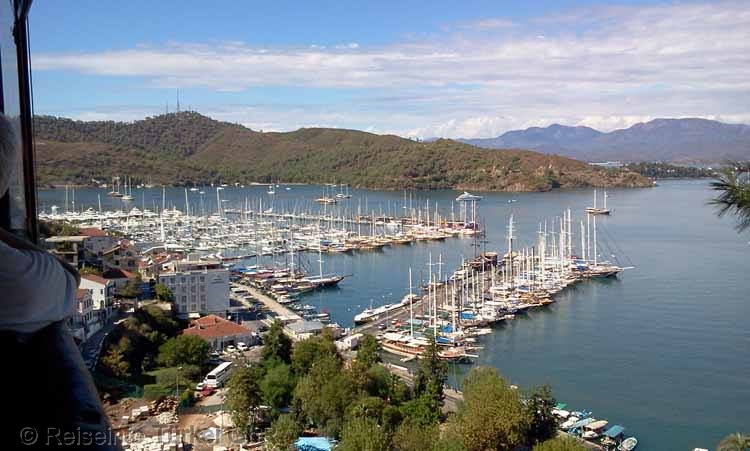 |
|
| |
|
| |
|
| |
|
| |
|
| |
|
| |
|
| |
|
| |
|
| |
|
| |
|
| |
|
| |
|
| |
|
| |
|
| |
|
| |
|
| |
|
| |
|
| |
|
| |
|
| |
|
| |
|
|
| |
The port of Fethiye is the starting point of the Blue Voyages into the Gulf of Fethye with its twelve beautiful islands. The Dalyan delta with the ancient city of Kaunos are also the destination of these trips, as well as the nearby dream beach Ölüdeniz and the island of Gemiler.
In season, hundreds of excursion boats leave the harbour every day, loaded with sun-hungry hotel tourists, who are drawn to the famous bathing bays such as Tersane or Kapı. |
|
| |
|
| |
|
| |
|
| |
|
| |
|
|
| |
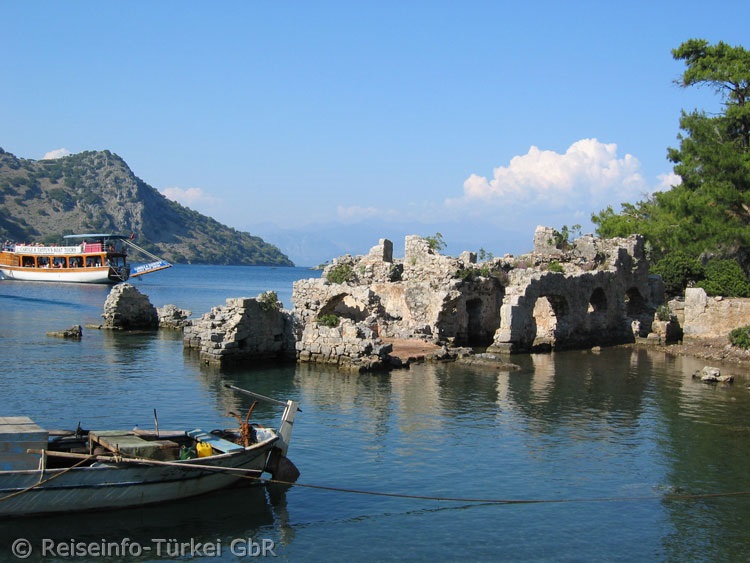 |
|
| |
|
| |
|
| |
|
| |
|
| |
|
| |
|
| |
|
| |
|
| |
|
| |
|
| |
|
| |
|
| |
|
| |
|
| |
|
| |
|
| |
|
| |
|
| |
|
| |
|
| |
|
| |
|
| |
|
| |
|
| |
|
| |
|
|
| |
One of the most popular destinations of the excursion boats is the Manastır bay (Manastır Koyu) also called Hamam bay. This bay is said to have been once the bathing place of Cleopatra. Today there are ruins of undefined origin, some of which protrude into the water. |
|
| |
|
| |
|
| |
|
|
| |
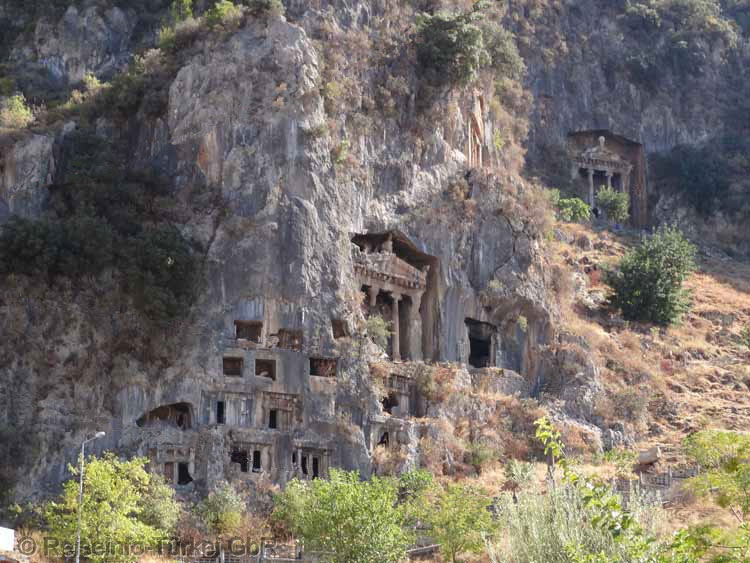 |
|
| |
|
| |
|
| |
|
| |
|
| |
|
| |
|
| |
|
| |
|
| |
|
| |
|
| |
|
| |
|
| |
|
| |
|
| |
|
| |
|
| |
|
| |
|
| |
|
| |
|
| |
|
| |
|
| |
|
| |
|
| |
|
| |
|
| |
|
|
| |
Visible from afar, rock tombs, including the tomb of Amyntas (top right), were carved into the rocks above the city in Lycian times. For the construction of the rock tombs tools made of stone and copper, later also bronze were used, a laborious task. |
|
| |
|
| |
|
| |
|
|
| |
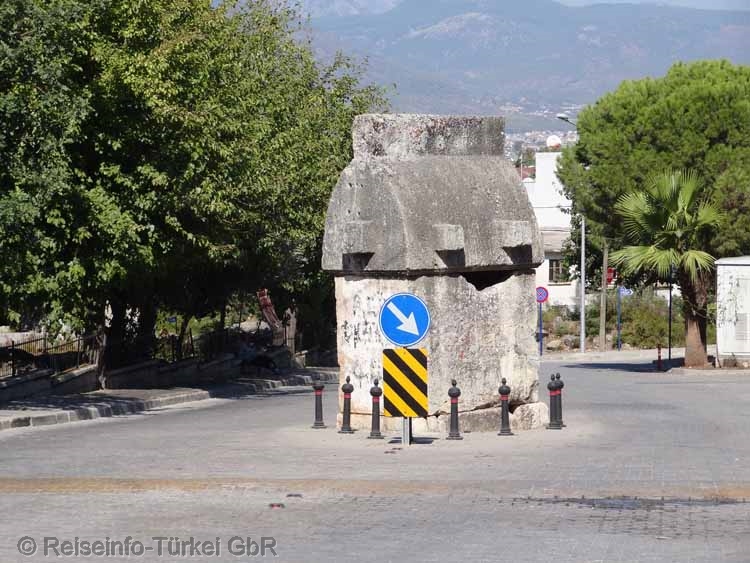 |
|
| |
|
| |
|
| |
|
| |
|
| |
|
| |
|
| |
|
| |
|
| |
|
| |
|
| |
|
| |
|
| |
|
| |
|
| |
|
| |
|
| |
|
| |
|
| |
|
| |
|
| |
|
| |
|
| |
|
| |
|
| |
|
| |
|
|
| |
Scattered over the core of the city there are still some Lycian and Roman Lycian sarcophagi. Partly difficult to reach, but with a breathtaking view of the bay of Fethiye. |
|
| |
|
| |
|
|
| |
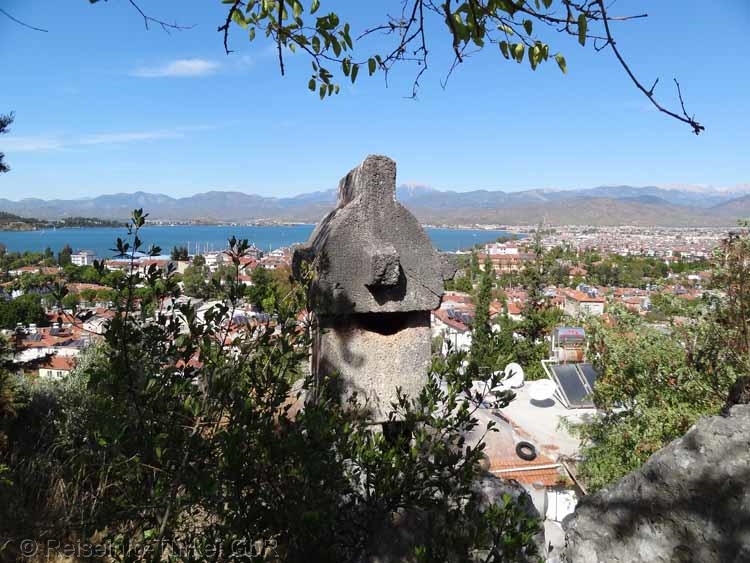 |
|
| |
|
| |
|
| |
|
| |
|
| |
|
| |
|
| |
|
| |
|
| |
|
| |
|
| |
|
| |
|
| |
|
| |
|
| |
|
| |
|
| |
|
| |
|
| |
|
| |
|
| |
|
| |
|
| |
|
| |
|
| |
|
| |
|
| |
|
|
| |
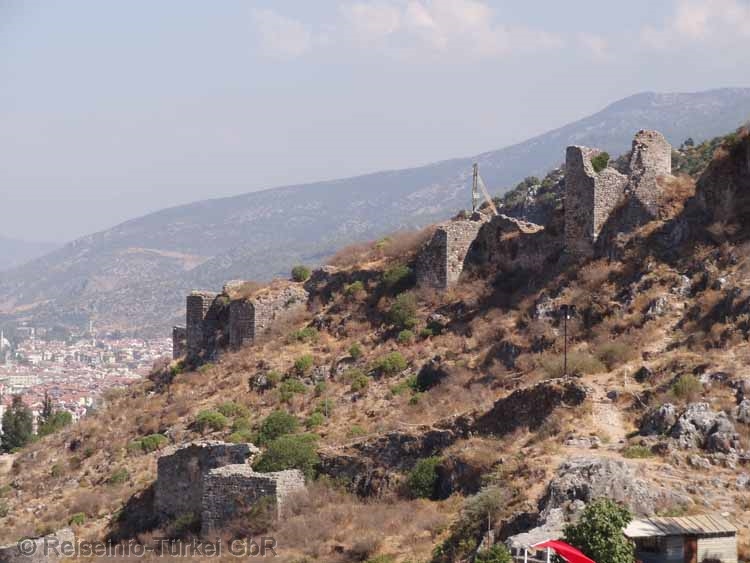 |
|
| |
|
| |
|
| |
|
| |
|
| |
|
| |
|
| |
|
| |
|
| |
|
| |
|
| |
|
| |
|
| |
|
| |
|
| |
|
| |
|
| |
|
| |
|
| |
|
| |
|
| |
|
| |
|
| |
|
| |
|
| |
|
| |
|
| |
|
|
| |
To the right of the large rock tombs, the ruins of a medieval castle are enthroned above the town. At the ruins of the castle, built in the 15th century by knights of the Rhodian Order of St. John with the support of the Genoese, it is sometimes easy to see that remains of a much older building have been included. This was also badly affected by the earthquakes in 1856 and 1950. |
|
| |
|
| |
|
| |
|
| |
|
|
| |
The Ancient Telmessos, today Fethiye, was one of the most important cities in Lycia, since it was located on the western border of the empire, on the border with the Carian territory. Although there are no clear documents about the foundation of the city, it is assumed that the city was founded in the 5th century BC. According to recent research, this place was already inhabited earlier, probably as early as the 3rd millennium BC. The city came under Persian rule in 547 BC and became the seat of a governor of the Persian king. In winter 344 / 343 BC Telmessos was besieged by Alexander the Great and quickly surrendered. In 189 BC the Romans placed the city under the kingdom of Bergama. After its decline Telmessos was incorporated into the Lycian Confederation and became one of the six most important cities of the Confederation. Together with the ruined city of Kadyanda, located about 30 km north in the mountains near Üzümlü, Telmessos formed the western border of the ancient Lycian League of Cities. In late antiquity, the city became the seat of a bishop, who came in rank directly after the Metropolitan of Myra. The titular bishopric Telmissus of the Roman Catholic Church goes back to the diocese. |
|
| |
|
| |
|
| |
|
| |
|
| |
|
| |
|
| |
|
| |
|
| |
|
| |
|
| |
|
| |
|
| |
|
|
| |
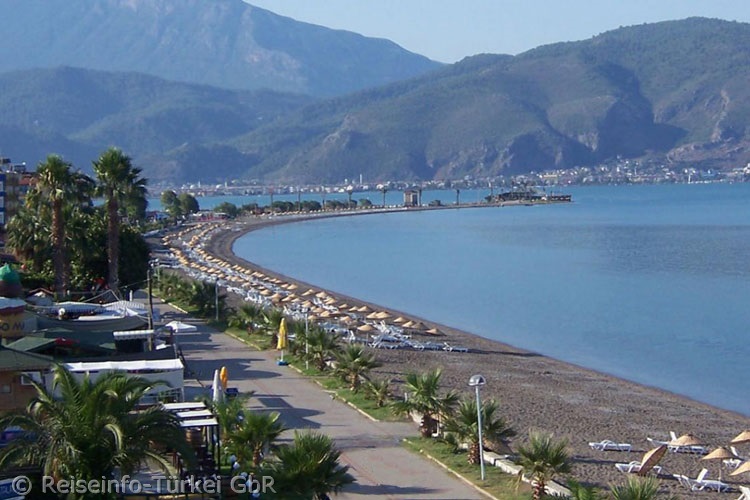 |
|
| |
|
| |
|
| |
|
| |
|
| |
|
| |
|
| |
|
| |
|
| |
|
| |
|
| |
|
| |
|
| |
|
| |
|
| |
|
| |
|
| |
|
| |
|
| |
|
| |
|
| |
|
| |
|
| |
|
| |
|
|
| |
About 7 km from the port is the suburb Calıs with a more than 2 km long, gently sloping beach. You will search in vain for bed castles there. The former small family guesthouses were developed into good to very good hotels and are not only appreciated by many regular guests. Numerous restaurants and shops of various kinds round off the offer for the mostly English and German tourists. |
|
| |
|
| |
|
| |
|
| |
|
| |
|
|
| |
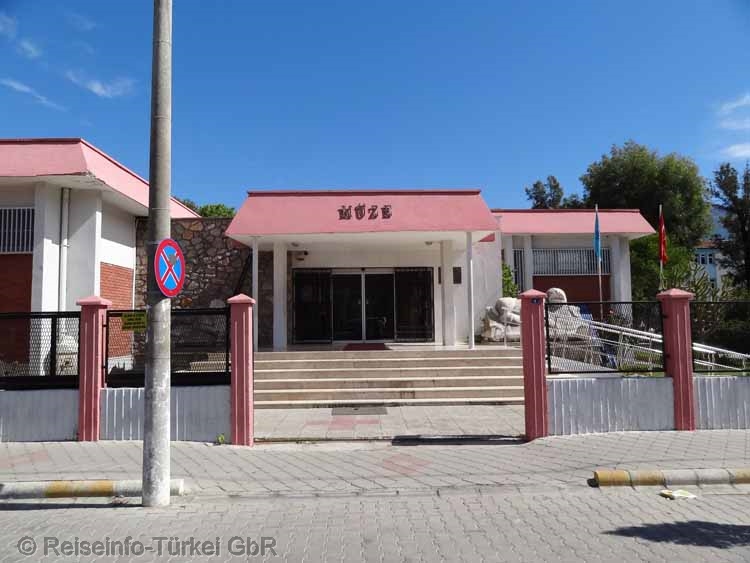 |
|
| |
|
| |
|
| |
|
| |
|
| |
|
| |
|
| |
|
| |
|
| |
|
| |
|
| |
|
| |
|
| |
|
| |
|
| |
|
| |
|
| |
|
| |
|
| |
|
| |
|
| |
|
| |
|
| |
|
| |
|
| |
|
| |
|
| |
|
|
| |
In the city centre of Fethiye, in the Kesikkapi Mahallesi, there is the small, but definitely worth seeing archaeological museum of Fethiye, opened on April 3, 1987. The archaeological collection contains exhibits from Telmessos, but also from other Lycian cities.
One of the most important pieces is a trilingual stele from Letoon, which is inscribed in Greek, Lycian and Aramaic. While the Lycian and Greek texts are almost identical, the Aramaic side of the stela shows only a short version. This stela helped the researchers to decipher the Lycian script and language.
Further finds come from excavations in Xanthos, Kaunos, Kadyanda, Oinoanda and Pinara. |
|
| |
|
| |
|
| |
|
| |
|
| |
|
| |
|
| |
|
| |
|
|
| |
Kayaköy |
|
| |
|
| |
|
| |
|
|
| |
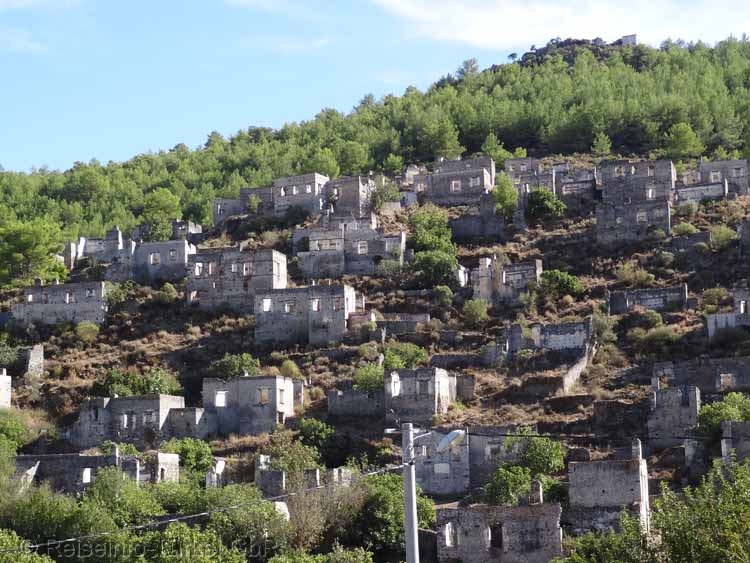 |
|
| |
|
| |
|
| |
|
| |
|
| |
|
| |
|
| |
|
| |
|
| |
|
| |
|
| |
|
| |
|
| |
|
| |
|
| |
|
| |
|
| |
|
| |
|
| |
|
| |
|
| |
|
| |
|
| |
|
| |
|
| |
|
| |
|
| |
|
|
| |
The largest part of the municipality of Kayaköy, located about eight kilometres south of Fethiye in a rocky mountain valley, is now a ghost town. The majority of the population of Greek origin had to leave the town in 1923 as part of the Greek-Turkish population exchange after the Treaty of Lausanne.
Since then the houses have been abandoned and have been left to gradual decay. Over time, the roofs were damaged by the effects of nature and collapsed.
Only the churches have survived somewhat better. Some frescos are almost intact. |
|
| |
|
| |
|
| |
|
| |
|
| |
|
| |
|
| |
|
|
| |
Ölüdeniz |
|
| |
|
| |
|
| |
|
|
| |
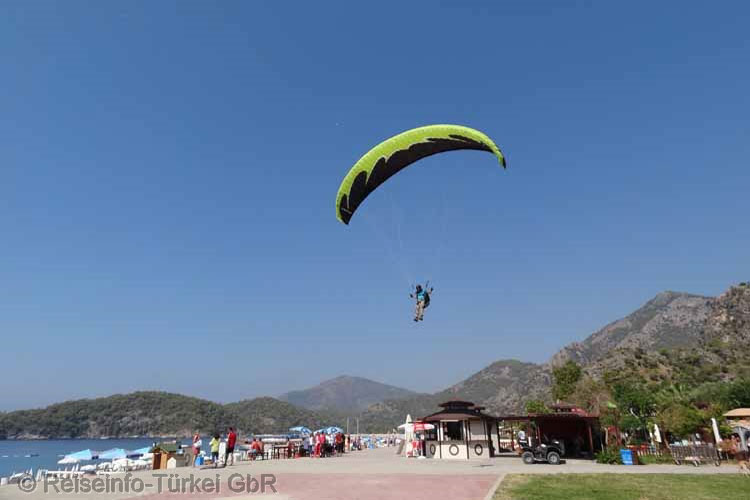 |
|
| |
|
| |
|
| |
|
| |
|
| |
|
| |
|
| |
|
| |
|
| |
|
| |
|
| |
|
| |
|
| |
|
| |
|
| |
|
| |
|
| |
|
| |
|
| |
|
| |
|
| |
|
| |
|
| |
|
| |
|
|
| |
14 km from the centre of Fethiye lies the lagoon of Ölüdeniz. The lagoon and the small town are not only known for its picturesque beach but also as a paradise for paragliders worldwide. High above the lagoon rises the Baba Dağı, with its 1969 meters. From there hundreds of paragliders take off daily in the season, alone or with a holidaymaker in a tandem flight to fly over the lagoon. Landing place is the promenade of the village. |
|
| |
|
| |
|
| |
|
| |
|
| |
|
|
| |
Saint Nicholas Island (Gemiler Adası) |
|
| |
|
| |
|
| |
|
|
| |
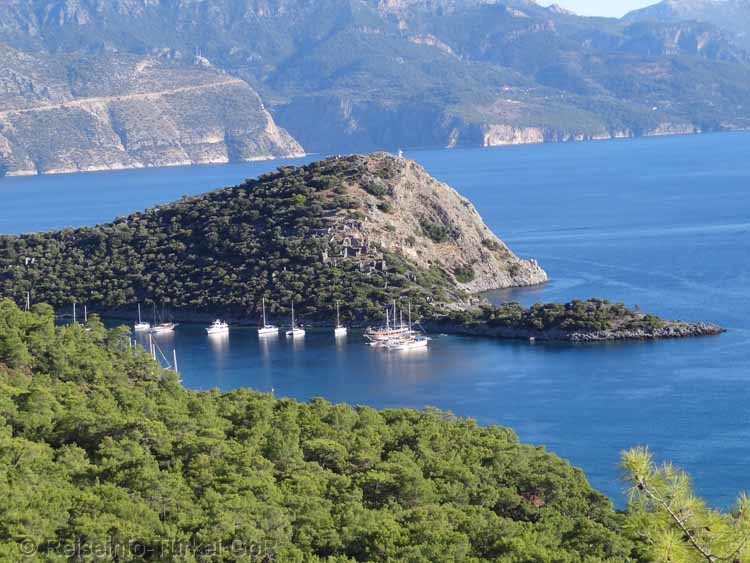 |
|
| |
|
| |
|
| |
|
| |
|
| |
|
| |
|
| |
|
| |
|
| |
|
| |
|
| |
|
| |
|
| |
|
| |
|
| |
|
| |
|
| |
|
| |
|
| |
|
| |
|
| |
|
| |
|
| |
|
| |
|
| |
|
| |
|
| |
|
|
| |
About 7 km after Kayaköy you reach Gemiler Bay. From a bathing beach with paid parking, small boats take over the private ferry service to the island.
On the island there are extensive Byzantine and certainly also late antique settlement remains. Worth mentioning are three church buildings from the 5th and 6th century A.D., a large basilica from the 7th century A.D. as well as an approx. 160 m long partly covered cloister.
Furthermore, wharves, remains of extensive residential buildings, a large cistern, remains of a fortification wall and an extensive necropolis are preserved.
The person of Nicholas of Myra is surrounded by many myths in connection with the island.
It is said that St. Nicholas lived on the island, and that the bones of St. Nicholas were kept here before being transferred to Myra (and later abducted to Bari by Italian merchants). None of these myths is documented. |
|
| |
|
| |
|
| |
|
| |
|
| |
|
| |
|
| |
|
| |
|
| |
|
| |
|
| |
|
|
|
| |
|
|
|
| |
 |
| |
|
|
|
| |
|
|
|